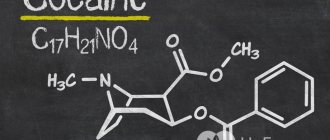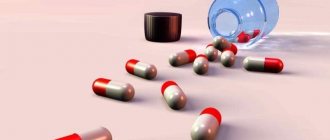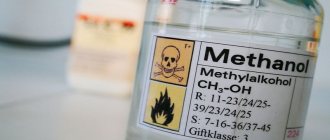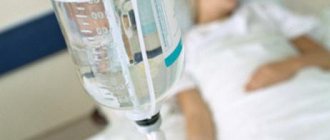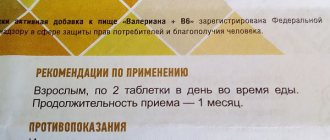Barbiturates are a group of drugs derived from barbituric acid that have a depressant effect on the central nervous system. The therapeutic effect is determined by the dose taken - from light sedation to surgical stages of anesthesia.
Source: depositphotos.com
Previously, barbiturates were widely used as hypnotics, sedatives and anticonvulsants, but due to the narrowness of the therapeutic action, as well as the ability to quickly cause drug dependence, their use is currently limited.
General information
Barbiturates are a group of drugs derived from barbituric acid. They have a depressing effect on the central nervous system. Effective as hypnotics and anticonvulsants. However, due to the high risk of developing addiction (psychological and physical) and overdose, barbiturates are practically not used in medical practice.
The list of barbiturates that are controlled and can be used by drug addicts includes:
- Alobarbital;
- Amorbital;
- Barbital;
- Butalbital;
- Butobarbital;
- Cyclobarbital;
- Methylphenobarbital;
- Pentobarbital;
- Phenobarbital;
- Secbutabarbital
- Secobarbital;
- Vinylbital.
All these drugs are available by prescription in the Russian Federation. But they are not available in free trade in pharmacy chains.
History of creation
The development of barbiturates as a group of drugs began with the discovery of the German chemist Adolf Bayer in 1864. He continued what he started in 1834–1838. Friedrich Wöhler and Justus Liebig studied the breakdown products of uric acid. But Bayer limited himself only to molecular formulas.
The evidence base for the structure of barbituric acid belongs to Louis Edouard Grimaud, who in 1879 synthesized this substance from malonic acid and urea. Emil Fischer and Joseph Mehring used this method to obtain certain barbiturates - barbital and phenobarbital.
Characteristics of barbiturates
All barbiturates, with the exception of phenobarbital and barbital, are quickly resorbed in the digestive canal, for example barbamyl and etaminal sodium within 15-20 minutes. Therefore, acute poisoning with these drugs begins to appear immediately and they are more dangerous. Quickly penetrating the brain tissue, they can soon cause a severe form of comma. Barbital and phenobarbital are absorbed more slowly, on average within 1-1.5 hours.
Therefore, they accumulate in the blood not so quickly and reach their maximum level much later. In addition, a decrease in intestinal motility during coma contributes to the retention of barbiturates in the digestive canal for several days, so gastric lavage should be carried out regardless of the time of taking these drugs.
Barbiturates bind to blood proteins and lipids to varying degrees: phenobarbital and barbital only by 5-15%, but etaminal sodium and barbamyl by 55-60%. They are also excreted from the body at different rates, largely determined by the completeness of metabolism in the liver.
Phenobarbital and barbital are almost not biotransformed, therefore they are released slowly, over 8-12 days, while etaminal sodium and barbamyl - only 2-4 days, since they degrade in the liver. In this regard, if coma develops during acute barbiturate poisoning, it can last 5-7 days and 2-4 days, respectively.
The mechanism of the toxic effect of barbiturates is due to the profound inhibition of many brain structures, as well as neuronaminal (synaptic) impulse transmission. Therefore, in the clinical picture of acute poisoning with these drugs, the leading manifestations are loss of consciousness, respiratory and circulatory depression, trophic disorders, renal dysfunction, coma, disappearance of reflexes - pain, tactile, tendon. Profound respiratory depression can result in respiratory arrest. The contractile function of the myocardium and the tone of vascular smooth muscles decreases, which leads to a decrease in blood pressure.
Due to hemodynamic disturbances and the development of hypoxia, diuresis decreases. Due to toxic damage to the capillaries, swelling, hemorrhages under the skin and on the mucous membranes, lungs, as well as bullous or necrotizing dermatitis may occur.
Significant changes occur in the area of metabolism: inhibition of redox processes, acidosis. Due to the inhibition of oxidative processes and increased heat transfer, hypothermia occurs. Hyperthermia may occur as a consequence of dehydration and the presence of hypoxia.
Effect on the body
Barbiturates are divided into several types according to their duration of action. The effects experienced by a drug addict depend on belonging to one or another. Thus, drugs from the ultra-short-acting group are capable of putting a person into a state of medicated sleep. The effect occurs within a minute, but the effect usually does not exceed half an hour. Examples are thiopental, methohexital, thiamylal.
Barbiturates of short and medium duration - pentobarbital, secobarbital, butalbital (fiorinal, fioricet), butabarbital (butizol), talbutal (lotuzate), aprobarbital (alurate). After intravenous administration, the effect begins after a quarter of an hour and lasts about 6 hours.
Long-acting barbiturates retain their effects on the body for a long time. They are used in the treatment of people with epilepsy. An example is phenobarbital.
Drug addicts are interested in barbiturates of the last two groups.
Physiological symptoms
While taking it, the tone of the vagus nerve increases, which causes bronchospasm to develop - a common cause of death. This phenomenon also causes a slowdown in heart rate and a decrease in blood pressure. Disruption of the gastrointestinal tract is a common cause of weight loss and an increase in the degree of general intoxication.
A rash appears on the skin, and pus often forms inside the pimples. Its color is much darker. Tissues do not recover well when damaged. The face, upper and lower extremities appear swollen.
Psycho-emotional manifestations
In moderate doses, barbiturates can cause euphoria, similar to intoxication. Coordination is lost, gait becomes unsteady. Due to the influence of barbiturates on the limbic system, it is difficult for an addicted person to control emotions and behavior.
The drugs slow down the transmission of nerve impulses to the central nervous system. Clinically this manifests itself in the following effects:
- sedatives;
- sleeping pills;
- narcotic;
- anticonvulsants;
- anxiolytic;
- muscle relaxant;
- amnestic.
In addition to psycho-emotional effects, hallucinations include auditory and visual. Problems with falling asleep are often noted. Over time, the addict’s personality degrades, memory is impaired, and learning ability decreases.
List of drugs
Before we talk about barbiturate poisoning, we need to list some popular medications that belong to this group. Since it is due to their excessive intake that overdoses occur. The list is like this:
- "Luminal".
- "Amutal".
- "Librium".
- "Butizol".
- "Alurat".
- "Seconal".
- "Repozal."
- Flurazepam hydrochloride.
- "Terazine."
- "Barbamil."
- "Valium."
- "Phenobarbital".
- "Lotusat."
- "Estimal".
- "Chloral hydrate".
- "I'm going to rant."
- "Triazolam."
- "Talbutal."
- "Flunitrazepam."
- "Brevital".
Of course, this is only a small list of drugs belonging to this group. It should be noted that medications differ in the duration of exposure. Some act for literally 5-15 minutes (they are used to calm a person before putting a person under anesthesia), others - about 6 hours.
Signs of a drug addict
It is not difficult to recognize a barbiturate addict. The skin is pale, slightly swollen. The face has the shade of dirty earth, the tongue is coated. Even minor injuries do not heal for a long time and often fester. Pustular rashes are also not uncommon. Hair becomes brittle and faded.
Drug addicts lose moral and ethical standards of behavior. They stop taking care of themselves. Complete apathy is replaced by rudeness, anger and even aggressiveness. They are characterized by selfishness and deceit. The face does not express any emotions.
Deep coma stage
It develops if the symptoms of barbiturate poisoning were ignored and the person was not given first aid. In this case, the following consequences arise:
- Areflexia.
- Bradycardia.
- Severe cyanosis of the skin and mucous membranes.
- Lack of muscle tone.
- A sharp drop in temperature.
- Cooling of the extremities.
- A sharp constriction of the pupils, followed by dilation during hypoxia.
- Hypotension.
- Weak, slow, shallow breathing.
Composition of the drug
Barbiturates are the result of the synthesis of barbituric acid. In itself, this substance does not have narcotic qualities. Such properties appear when hydrogen is replaced by various radicals. The standard method is the condensation reaction of urea with dialkylmalonic acid esters. If the process is supplemented with thiourea, thiobarbiturates are obtained.
Most pharmaceutical drugs used by drug addicts contain phenobarbital. The concentration of this substance may vary.
Complications of poisoning
Such manifestations include:
- Bronchorrhea with further obstruction of the small airways, pneumonia.
- Primary collapse, tachycardia.
- Metabolic disorders leading to bedsores, bullous dermatitis, hypothermia.
- Atony of the stomach, bladder, intestines.
- SPS is a syndrome of positional compression of nerve trunks and soft tissues as a result of prolonged coma.
To prevent intoxication and the development of serious health consequences, it is enough to prevent poisoning with drugs from the barbiturate group.
Harm from drugs
Barbiturates greatly deplete the nervous system due to frequent mood swings. Against this background, suicidal tendencies are formed. Hallucinations may appear.
Violation of therapeutic dosages negatively affects the functioning of the heart. Due to a decrease in the frequency of contractions, the volume of blood pumped by the organ decreases. As a result, the brain does not receive enough oxygen and its functioning is impaired. Over time, dementia develops.
Alternating nausea with vomiting and constipation leads to weight loss. In persons with chronic pathologies of the gastrointestinal tract, the condition may worsen. If there are sores, they may open.
Barbiturates cause the greatest harm to the central nervous system and respiratory organs.
Consequences of long-term use
When taking barbiturates over a long period of time, fatigue appears, attention is depleted, and the ability to concentrate is lost. Intense mental activity becomes difficult for the addict. Performance also decreases—even simple tasks require taking a large dose. The drug addict becomes irritable.
If a person continues to use barbiturates in large dosages, he develops toxic encephalopathy. This manifests itself in a decrease in the speed of thought processes and speech impairment. Another consequence is barbituric dementia. Even the slightest mental effort causes difficulties for patients. Thinking is slow, as is speech. Vocabulary is limited, memory problems are observed.
Superficial coma stage
Unfortunately, if it occurs, then it is useless to provide emergency care for barbiturate poisoning. All we have to do is wait for the doctors. The patient loses consciousness, falls into deep sleep, and his pupils constrict. Corneal, tendon and pupillary reflexes are also weakened.
Neck stiffness is common at this stage. Pathological Babinski and Rossolimo reflexes may appear. The frequency of respiratory movements decreases, the skin and mucous membranes acquire a bluish tint.
The pulse becomes frequent, blood pressure may also change, but not much - it remains within the normal range.
Danger of consumption methods
Pharmaceuticals produce barbiturates in two forms - solutions (for intravenous and intramuscular injections) and oral preparations (tablets and capsules). In themselves, these methods of consumption do not pose any danger to the body.
It is important to remember that with rapid administration of the drug, respiratory distress occurs, blood pressure decreases significantly, and sometimes cardiac arrest occurs.
Oral forms of barbiturates cause exacerbation of chronic gastrointestinal diseases as side effects. If therapeutic dosages are not observed, this method of use greatly increases the risk of opening ulcers.
Recovery period
For some time after the initial consequences have been eliminated, the person will continue to feel weak. It is recommended to lead a gentle lifestyle and not expose yourself to physical and emotional stress. Daily walks in the fresh air will be useful.
It is also recommended to pay special attention to your kidneys and liver. Drinking mineral water, herbal decoctions, infusions and teas will be beneficial.
Rosehip is also effective - you need to pour 2-3 tbsp. l. dried berries with boiling water (300 ml), boil, simmer, and then cool. After filtering you can drink it, you can add a little sugar. Drinking this tea daily will help cleanse your kidneys.
Drug overdose
Narcologists distinguish four clinical stages of barbiturate intoxication. The first is falling asleep. At this stage, the person becomes sleepy and apathetic. The reaction to external stimuli decreases, and in some drug addicts it may be almost completely absent. But establishing contact with close relatives and doctors is possible.
The second stage is superficial coma. The main symptom is loss of consciousness immediately after taking it. Painful stimulation causes a weak motor reaction, short-term dilation of the pupils. Swallowing, even if it is liquid, is difficult. The cough reflex is greatly weakened. This is especially dangerous against the background of respiratory dysfunction due to tongue retraction. For many, body temperature rises to 39–40°.
The third stage is deep coma. All reflexes are absent, and signs of impairment of vital functions can be observed. Due to depression of the central nervous system, breathing becomes shallow, arrhythmic, and in especially severe cases, paralysis occurs.
The fourth stage is a post-comatose state. Accompanied by a gradual restoration of the level of consciousness. In the first few days, the drug addict becomes tearful, signs of psychomotor agitation are observed, and sleep is often disturbed.
Main reasons
Barbiturates are classified as sedative and hypnotic drugs. The main cause of overdose is the body's development of tolerance. Ceasing to feel the usual sensations, the addict injects increasingly larger doses. Tolerance develops especially quickly in persons with liver or kidney failure. Due to these pathologies, the metabolism and elimination of drugs slows down.
Barbiturate poisoning is often a consequence of criminal acts.
Intoxication often develops after an unsuccessful suicide attempt. This desire arises against the background of psycho-emotional trauma, a history of severe pathologies, and exacerbation of chronic diseases. Some people, having survived, begin to take barbiturates in non-therapeutic dosages.
First aid
In case of barbiturate poisoning, the universal first aid remedy is gastric lavage. To do this, you can use activated carbon or ordinary baking soda. Taking solutions can be difficult. An alternative is 1 liter of boiled water at room temperature. When the entire volume has been drunk, gently press on the root of the tongue with clean fingers, inducing an attack of vomiting. After the stomach is washed, the drug addict is given any sorbent. Then they are put to bed, covered with a warm blanket and given warm tea from time to time.
The above measures are possible only if the drug addict is conscious. It is not recommended to carry out resuscitation actions on your own, especially in the absence of knowledge. The person is placed on his side to avoid asphyxia due to retraction of the tongue or accumulation of vomit. They also cover him with a warm blanket and call an ambulance.
Health care
In case of an overdose of barbiturates, the pulmonary system is affected. Therefore, inhalation of oxygen with 5% carbon dioxide is indicated. If necessary, accumulated mucus is removed from the bronchi. If the patient is unconscious, artificial respiration is used and 1 ml of 1% Lobelin solution is administered.
If it was not possible to perform gastric lavage at home, the procedure is carried out in a hospital setting. This is done using a gastric tube with the introduction of activated carbon, a saline laxative. Extracorporeal detoxification is also indicated.
An overdose of barbiturates impairs hemodynamics. To restore it, infusion therapy with pressor amines is prescribed - Dopamine, Adrenaline, Norepinephrine.
Consequences of lack of help
If medical measures are not taken after barbiturate poisoning, this may increase the risk of death. Depression of the respiratory center leads to bronchopneumonia and pulmonary edema. Retaining high doses of barbiturates in the body enhances these side effects.
Another dangerous consequence is cerebral edema. It can lead to mental disorders and disability. Often leading to the death of the drug addict, especially if the drug addict is taken to the hospital late.
Lethal dose
In the UK, prescriptions for barbiturates and benzodiazepines were studied between 1983 and 1999. Of their total number of 1 million, there were 146.2 deaths from barbiturates versus 7.4 from benzodiazepines. This confirms the danger of taking the first group.
Benzodiazepines are a class of psychoactive substances that have sedative, hypnotic and anticonvulsant effects. They also relieve anxiety.
Data on lethal dosage for the main representatives:
- Amobarbital - 2–4 g;
- Barbital - 6–8 g;
- Heptabarbital - 20 g;
- Diallylbarbituric acid - 6–8 g;
- Phenobarbital - 4–6 g;
- Cyclobarbital - 5–20 g.
As is clear, the lethal dose varies depending on the type of barbiturate. But if alcohol is present in the addict’s body, regardless of the total volume, or central nervous system depressants, a lower concentration may be required for death.
How to terminate
To stop the harmful, dangerous process of destruction of the body, it is important not only to completely abandon the use of barbiturates. Narcologists recommend adhering to a gentle diet. Fried foods, fatty foods, hot spices, and always alcohol are excluded from the diet.
Vegetable soups, fermented milk products, fruits and vegetables are welcome. Large amounts of liquid help cleanse the kidneys and liver. It could be green tea, a decoction of rose hips or carrots, beets.
In case of barbiturate poisoning, antagonists of sleeping pills are used. Most often these are Corazol, Naloxone, Bemegride. The exact dosage and type of medication is determined by a medical professional, taking into account the condition of the drug addict.
Additionally, diuretics are prescribed. They help cleanse the liver and kidneys of decomposition products.
Withdrawal
Withdrawal syndrome is quite severe. It begins to develop within the first 24 hours from the moment you stop taking it. On the third or fourth day, a peak in severity is observed, then the clinical picture gradually fades away.
By the end of the first day, the drug addict’s mood changes - it becomes anxious and melancholy. The person becomes irritable, touchy, and quick-tempered. Even without reason, there is a desire to cry. There are problems falling asleep; sleep in the first two nights lasts no more than 5–6 hours. And on the third day, insomnia develops. By this time, affective disorders become noticeable, and suicidal tendencies appear.
Subsequently, drug addicts experience:
- weakness that only gets worse over time;
- dizziness;
- visual perception of surrounding objects is greatly distorted.
Barbituromaniacs who consume large doses often suffer from sudden increases in blood pressure, which can be fatal. Regardless of the volume taken, all addicts feel pain in large joints - shoulders, knees, elbows. Nausea often occurs, accompanied by vomiting, which causes weight loss. Other signs of withdrawal include:
- eyelid tremor;
- trembling of fingers;
- involuntary muscle twitching.
When taking large doses, convulsions are observed on the first day. On the third day - psychosis, which is especially aggravated at night.
Withdrawal from barbiturate abuse lasts about 3 weeks. For some addicts it can take a month. Mood disorders, decreased quality of sleep, cravings for drugs, and decreased appetite last especially long.
Due to the high risk of developing psychosis and epileptic seizures, withdrawal syndrome is often fatal.
If professional help is not provided to a barbituromaniac during withdrawal, the withdrawal syndrome transforms and becomes protracted. Most clinical signs become less pronounced. Functional pathologies of the cardiovascular system come first. Seizures are occurring more and more often - up to 5-10 seizures per day; taking specialized medications does not have the desired effect.
How to ease withdrawal symptoms
During withdrawal, the drug addict must be in a hospital. Under constant monitoring, the dosage of barbiturates is gradually reduced. At the same time, psychological training is carried out to help relieve anxiety. It is impossible to introduce new sedatives - one addiction will be replaced by another.
To ease withdrawal symptoms, barbiturate antagonists - caffeine, bemergide and others - are introduced into the body. They stimulate the central nervous system, gradually removing a person from a lethargic state. Hemodialysis using an artificial kidney apparatus is recommended. Increase diuresis with injections of Novurite and urea solution.
When should you see a doctor?
In case of intoxication with barbiturates, it is necessary to consult a doctor in any case. The doctor will conduct an examination and prescribe appropriate treatment. Therapy includes a number of actions that help normalize the patient's condition.
What happens:
- Using a stomach emptying tube
- Saline laxatives are prescribed
- Formed diuresis is carried out,
- If necessary, connect a device for artificial ventilation of the lungs,
- Plasmapheresis, hemosorption,
- To restore the functioning of the respiratory process, special means are used to stimulate breathing (antagonists) - Bemegride, Caffeine,
- If necessary, hormonal drugs are used.
Treatment of barbiturate intoxication is carried out until complete recovery; vitamin complexes and proper nutrition are selected.
Excretion from the body
Any medications, including those of the narcotic spectrum, leave traces in the body - antibodies, metabolites. They are found in various biological materials. Availability periods vary:
- the blood is cleared after 1–2 days, and if a dependence has formed – 7 days;
- in the urine with a single use the drug can be detected after 2–4 days, and with a systemic use – within 1–3 weeks;
- barbiturates and their metabolites can be detected in saliva for 79 hours;
- Toxins remain in hair and nail plates for up to 3 months.
The rate of elimination is influenced by a large number of factors. These are the duration of use, the volume of the drug administered, the weight and age of the drug addict. Metabolic speed, which varies from person to person, is also important, as is the presence of systemic diseases.
How to speed up elimination from the body at home
Barbiturates have a toxic effect on the body. It is difficult to cope with this on your own. In case of acute poisoning, which accompanies taking drugs in non-therapeutic dosages, home care is limited to flushing the gastrointestinal tract.
Rinsing is effective only if 8 to 10 hours have passed since administration.
For the procedure, you can use an aqueous solution of activated carbon. To prepare it, the substance at the rate of 1 g per 1 kg of weight is dissolved in 300 ml of warm boiled water. An alternative composition is a tablespoon of soda per 1.5–2 liters of liquid. In the absence of nausea and vomiting, you can give a solution of Magnesium Sulfate (“magnesia”).
After stabilization of the patient's condition, the patient should be transported to a specialized medical facility as soon as possible.
Detoxification in hospital
The procedures, carried out under the supervision of medical personnel, continue the first aid provided at home. Hemodialysis is used to cleanse the body. If the device is not available, repeat exchange blood transfusions are performed. Using saline sodium chloride solution will speed up the process. It can be replaced with a 5% glucose solution, but only in the absence of pulmonary edema.
Barbiturates are primarily excreted by the kidneys. Therefore, to speed up cleansing, measures are taken to increase diuresis, i.e. volume of urine produced. For example, intramuscular or intravenous injections of Novurit.
If the patient's condition is extremely severe, then to achieve maximum daily diuresis, intravenous administration of a 30% urea solution, alkaline solutions and electrolytes is recommended. The procedure is repeated no earlier than a day later. Immediately after urea, 400 ml of 4% sodium bicarbonate solution, saline solution and 5% glucose solution are introduced through the same system. Be sure to measure urine output every hour through a catheter previously inserted into the bladder.
If urine output reaches 8–11 L, the risk of sodium and potassium leaching increases. To prevent the development of hyponatremia and hypokalemia, 10 ml of 5-10% sodium chloride solution and 50-75 ml of 2% potassium chloride solution are administered intravenously.
A comatose state is treated with large doses of analeptics - caffeine, strychnine, bemegride. The exact dosage is determined by the doctor based on the severity of the condition. A cocktail of strychnine, caffeine, thiamine, vitamin C and glucose helps to cope with muscle excitability.
Therapy
Unfortunately, no specific antidote has been developed. Barbiturate poisoning has many consequences, and therefore treatment is carried out comprehensively.
A mandatory stage is infusion therapy and removal of toxins through the genitourinary system. For this, insulin, sodium bicarbonate, ascorbic acid and glucose are used.
You also need to reduce hypoxia. For this purpose, drugs such as Mexidol, Piracetam and Vinpocetine are used.
If a person has respiratory failure, they are given caffeine. In this case, an antagonist of sleeping pills can also become an antidote.
Which drug will be chosen depends on the drug with which the person was poisoned. So, for example, in case of an overdose of Diazepam, Naloxone is administered. If the victim has been poisoned by Cyclobarbital or Phenobarbital, Bemegrid is indicated for him.
If swelling of the brain tissue occurs, the patient is given a plasma transfusion and then prescribed diuretics. This is necessary for the kidneys to eliminate toxic agents. You will also have to take vitamins to improve metabolism and minimize hypoxia.
Drug test
The study of biological fluids and tissues for drug content is used for various purposes. The first priority is the appointment of therapy to eliminate the consequences of intoxication.
The results of some techniques have legal force and are recognized in court as evidence of guilt.
Types of tests
In narcology, biological fluids and tissues are studied by chemical and toxicological analysis. It highlights several methods:
- ELISA (enzyme-linked immunosorbent assay);
- GLC (gas liquid chromatography);
- TLC (thin layer chromatography);
- GC/MSS (GC/MSS);
- IHR (immunochromatography);
- HPLC (high performance liquid chromatography).
Diagnosis of urine is carried out by two methods - immunochromatographic analysis and chemical toxicology. The first involves the use of test strips. The results are preliminary and cannot be used in court. They are not intended to determine the quantitative level or severity of intoxication.
Testing using a chemical-toxicological method allows you to establish the fact of use, provided that no more than 72 hours have passed since the moment of administration. Urine testing is carried out exclusively in the laboratory.
Diagnosis of blood for drug content is carried out using two methods:
- Quarterly test - allows you to confirm the fact of use even if about 4 months have passed since the last injection. During the analysis, it is not so much the drug that is determined, but the antibodies to it. It is an adjunct to urine drug testing.
- The chemical-toxicological method is an analogue of urine testing.
Saliva examination is carried out using three methods:
- Immunochromatographic - drug screen tests are used. The results are preliminary.
- Chemical-toxicological. This is the name of a whole set of tests: polarization fluorescence immunoassay (PFIA); enzyme immunoassay (ELISA); drug analysis by gas chromatography-mass spectrometry; examination (research) for alcohol using gas-liquid chromatography. It is possible to reliably establish the fact of use if 48 to 72 hours have passed since the injection. The results can be used in court.
- Using the Drager Drug system. It includes a two-piece Drager Drug kit. Drager Drug Test and Analyzer. Test 5000. It is hygienic, the probability of error is minimal.
During the hair examination, it is possible to restore the chronology of use and the exact dosage. The samples are treated with organic solvents, which act on the protein shaft of the hair, releasing the fixed substances. Next, the resulting material is studied by GC/MS. Nails are examined in the same way.
Express test
This method is actively used at home or during unscheduled checks. Their use does not require special knowledge or training. The purchase is completely anonymous. Such rapid tests are most often found in pharmacy chains.
- Iandi Diagnostician, 3-5 drugs, cross-screen tests;
- Factor-Med, up to 6 types, strips;
- Express Test, up to 10 drugs;
- Guangzhou Wondfo Biotech Co. Ltd, up to 10 types, cross-screen tests.
As with laboratory tests, for express tests it is better to collect mid-morning urine. This material is the most concentrated. But even if this condition is met, the results should not be considered final.
Is it possible to cheat the test?
In laboratories, collection of materials is carried out in the presence of an observer. The results can only be influenced if the tests are carried out at home. To achieve this, the following measures can be taken:
- diluting urine with acetic, citric acid or water;
- taking B vitamins immediately before the test.
These measures are used most often. Sometimes drug addicts resort to visiting a sauna or taking hot baths. You can also find advice on taking decoctions of elderberry, basil, and nettle. These herbs are known for their cleansing properties.
Reviews
People who have used drugs containing barbiturates as prescribed by doctors often leave negative comments about these drugs.
Take, for example, Phenobarbital. People who have taken it for epilepsy say that side effects occur even when using the drug in the prescribed dose. Weakness, dizziness, apathy, low blood pressure are just a small part of the consequences. Even when patients stop taking the pills, mental retardation remains for several weeks.
People are also not always delighted with other drugs with barbiturates. Many people note a short-term improvement in their condition in the first days of taking it, but then the effect wears off. Excitability increases, problems with sleep appear, and seizures “deepen.” In general, not everyone recommends solving their health problems with the help of such medications.
Analogues and their dangers
Barbiturates are a broad group of drugs. They have a large number of agonists according to indications and method of administration. A few examples:
- Hexamidine is a drug used in the treatment of seizures. The chemical structure is identical to Phenobarbital. Its danger lies in its strong hypnotic effect and affordable cost.
- Corvalol, Valocordin, Pentalgin-N are drugs that dilate blood vessels and relieve muscle spasms. Sleeping pills and sedatives are reduced. These drugs are often used by drug addicts in home treatment as a way to achieve euphoria.
Nosological analogues are distinguished separately:
- Lyrica is a pregabalin-based drug. The analgesic effect is enhanced by taking large doses. This poses a particular danger given that the drug has been experimentally proven to be addictive.
- Difenin is an affordable remedy that effectively relieves pain. Barbiturate addiction is known to cause severe muscle spasms. Diphenine is often used in combination with Phenobarbital, enhancing the feeling of euphoria.
Antipsychotics are also barbiturate agonists. With prolonged use, they cause a number of serious consequences:
- motor restlessness;
- involuntary contraction of the facial muscles, which can cause it to become distorted;
- increased depression, epileptic seizures;
- sexual dysfunctions;
- pneumonia.
There are antipsychotics that are easy to purchase in pharmacies without a prescription: Quetiapine, Afobazole, Ariprizole. Their danger is that in therapeutic dosages they do not cause a state of euphoria. Therefore, when replacing barbiturates with them, there is a high risk of overdose.
Falling asleep stage
It must be noted that the clinical picture of poisoning includes several stages. The first is the stage of falling asleep. Signs of barbiturate poisoning are as follows:
- Ataxia.
- Apathy.
- Muscle weakness.
- Drowsiness.
- Blurry speech.
- Increased salivation.
- Constriction of the pupils (reaction to light remains).
Reflex activity is present at this stage, and cardiovascular and respiratory disorders do not occur.
Drug addiction treatment
Confirmed use of barbiturates in non-therapeutic dosages requires mandatory therapy. This allows you to avoid serious dysfunction of internal organs and death. A course of anticonvulsants is prescribed, which help eliminate muscle spasms and accompanying pain; manic-depressive psychosis is a common phenomenon when using barbiturates. Most often, a 5% amobarbital solution is used intravenously or intramuscularly to relieve them. At regular intervals (2–3 days), the dosage is reduced to avoid the formation of a new dependence.
In addition to drug treatment, detoxification is carried out. This procedure helps cleanse the blood of barbiturates, normalize the functioning of all organs and metabolic processes. There are several methods:
1. Forced diuresis
Involves intravenous administration of an isotonic solution of sodium chloride and glucose. This composition has a diuretic effect. The method is contraindicated for persons with chronic pathologies of the heart and kidneys.
2. Enterosorption
The method is used to treat people who have used the oral form of barbiturates. The goal is to flush out the digestive system. Use a probe or enema. After cleaning, be sure to take a sorbent that binds chemical compounds and removes them naturally.
3. Hardware blood purification
Effective with long-term use and large dosages. The most popular methods:
- hemosorption - blood taken from a vein is passed through a special filter and then reintroduced into the body using droppers;
- plasmapheresis - during the procedure, 500 ml of blood is replaced with the same volume of saline solution. The blood is placed in a centrifuge where it is split into cell mass and plasma. The cell mass is diluted with saline and injected into a vein.
Metabolic therapy is another part of treating barbiturate addiction. One of the drugs that is most often prescribed is B vitamins, which stop the aging process of nerve cells and restore metabolism. Limontar is also used, an amino acid drug that regulates energy metabolism in nerve cells. Piracetam is used to improve blood supply to the brain.
How addiction is formed
Any addiction, including pharmaceutical addiction, goes through three stages in its development. The first is psychological addiction. During this period, the intensity of emotions from each injection gradually decreases. The danger is that to achieve euphoria, the addict constantly increases the dosage. Efficiency drops, mood deteriorates, and a feeling of apathy and dissatisfaction appears.
The second stage is physical dependence. By this time, the patient’s body has become accustomed to barbiturates, so functional disturbances are observed between drug administrations. It is at this stage that withdrawal symptoms or withdrawal symptoms develop.
Third stage, final. Mental and physical disorders become irreversible. Interest in life is lost, behavior becomes inappropriate.
If there is no adequate treatment, any stage can result in death.
How long do drug addicts live?
The timing of death due to the use of narcotic drugs and pharmaceutical preparations of similar action varies from person to person. Even one dose of barbiturates, which depress the central nervous system, can cause death due to suicide in a state of psychosis.
Another provoking factor is the volume of the drug taken. Many drug addicts increase the dose to reduce the severity of withdrawal symptoms. This increases the risk of overdose and, accordingly, death.
When taking barbiturates, the central nervous system is damaged. This results in seizures that resemble those that occur with epilepsy. A recessed tongue can block the windpipe and block breathing.
Rehabilitation
In the case of any drug addiction, cleansing the body and stabilizing the functioning of internal organs is not enough. A course of psychological rehabilitation helps to achieve sustainable remission.
Under the guidance of psychologists, barbiturate addicts understand the causes of the disease and learn to eliminate them. Often at meetings, group and individual, the problems that prompted the hobby and ways to solve them are discussed.
Rehabilitation may also include non-drug methods. This may be a course of electrophoresis, darsonvalization for disorders of the central nervous system and brain. UHF is also prescribed.
Why you can’t treat yourself at home
Barbiturates should be discontinued gradually, with constant monitoring of the condition. Ignoring this rule can lead to convulsions, nausea and vomiting. In particularly severe cases, the addict may fall into a coma. All of these conditions can cause death.
At home, you can only continue the therapy started in the hospital. Treatment in this case consists of taking medications prescribed by a doctor.
Working with codependents
If the addict lives with someone close to him, they are also included in the therapeutic program. Unhealthy passion also negatively affects their behavior and attitude towards the disease. Therefore, to achieve sustainable remission, psychological work is also carried out with the parents and husband/wife of the drug addict.
At the meetings, they provide complete information about the disease, both medical and psychological. The reasons for the formation of dependence are discussed.
The duration and exact program is determined individually.
Ambulatory treatment
A prerequisite for the transition to this part of therapy is the drug addict’s persistent desire to restore a healthy lifestyle and stop using barbiturates. And also the willingness of relatives to join the therapeutic program.
The duration of outpatient treatment is 3–6 months. The patient must maintain contact with the specialists of the clinic where he was treated. It is planned to prescribe restorative vitamin therapy, conduct thematic lectures and seminars. Working with those who have successfully completed the program and completely recovered from addiction will also be productive.
Resocialization
During an addiction to drugs, a person withdraws from his usual social circle, replacing it with the same drug addicts. Addiction interferes with performing work duties and studying. To successfully get rid of a bad habit, resocialization is required.
It comes in two types:
1. Group
Former drug addicts who have undergone treatment at the rehabilitation center live in groups. They restore lost abilities to communicate, build social connections, and learn to organize their free time. In addition, they attend classes at the center and take retraining courses. At the same time, the addict, together with the curator, organizes independent psychological work.
2. Homemade
This type of resocialization is only possible if the addict’s loved ones lead a healthy lifestyle and can provide minimal control. Courses for relatives are designed to simplify adaptation.
How to quit on your own
Self-medication is based on the reluctance of the addict to go to a specialized medical institution, making his illness public. When quitting a drug, you must go through a period of withdrawal. It is known that in the case of barbiturates it is very difficult, many conditions pose a threat to life. At the same time, the addict must cope with his aggression, irritability, and suicidal desires.
Self-medication in conditions of a central nervous system suppressed by barbiturates can lead to increased dependence. Mental disorders will also become more complex. The only thing a drug addict can do is to refuse to communicate with people who use drugs and alcohol.
Bibliography:
- Barbituric acid. History, receipt and properties.
- Barbiturate poisoning: modern views on pathogenesis and treatment.
- Modern chemical-toxicological research methods in narcology.
- Federal clinical guidelines for the diagnosis and treatment of withdrawal syndrome.
- Author Veronica Dovnich
Editor Artyom Emelyanenko
Postcomatose period
The stage described above can last from a couple of hours to several days. When medical care is provided, the person comes out of the coma. But over a certain period of time (how long it will take depends on the degree of intoxication), a number of severe symptoms persist. Among them:
- Impaired coordination of movements.
- Ptosis of the eyelids.
- Diplopia.
- Emotional lability.
- Convergence of the eyes.
- Nystagmus.
- Motor restlessness.
- Transient neurological disorders.
- Mental deafness.
If help is not provided in time, complications may begin to develop after the post-comatose period. Mental disorders, bronchopneumonia, bedsores, pulmonary and cerebral edema, and mechanical asphyxia often occur.
